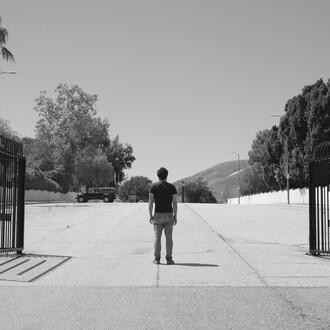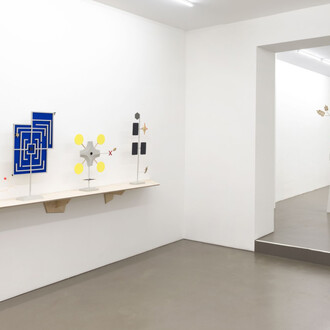Wanted by Nadya Tolokonnikova (b. 1989, Norilsk, Siberia) explores art as a form of defiance and survival. As an artist, activist, and creator of the feminist collective Pussy Riot, Tolokonnikova has spent over a decade challenging authoritarianism through radical artistic expression. Persecuted for her conceptual performances, she gained international recognition with Punk prayer (2012), a protest in Moscow’s Cathedral of Christ the Saviour, which led to her imprisonment in a Russian penal colony for “hooliganism motivated by religious hatred”. Since then, she has continued to use art as a weapon against oppression – through performative works, installations, objects, and music. Tolokonnikova has forged a visual language that rebels against conservative realities: anarchic, radical, yet deeply affecting. In 2024 the OK Linz museum held the first-ever solo museum exhibition of her work.
At the center of Wanted stands a reconstruction of Nadya Tolokonnikova’s own prison cell – an oppressive, claustrophobic space that served as the backdrop for her two-year-long “durational performance” of incarceration. Within the bars, she places letters, legal documents, press reports, and photographs that bear witness to the brutal conditions and psychological strain she endured.
Through this deeply personal yet politically charged installation, Tolokonnikova transforms her experience of imprisonment into an act of defiance – reclaiming agency over her narrative while exposing the inhumanity of the system that sought to silence her.
Nadya Tolokonnikova also presents a series of wall-mounted works that transform symbols of resistance into art objects. The Riot shields, traditionally tools of state control, are reimagined as artifacts of resistance, challenging the balance of power between authority and protest. Her Molotov kits are conceived as “do-it-yourself” protest sets, crafted from engraved birch wood, black ink, wine bottles, styrofoam, tin, and fabric. The kits feature engravings of barbed wire and Russian prison churches.
In her paintings, Tolokonnikova creates her own icons, blending old Slavic calligraphy, contemporary slogans, crosses, and the stylized face of a woman wearing a Pussy Riot mask – constructing a new visual language of dissent. Across these works, Tolokonnikova fuses religious iconography with revolutionary urgency, making resistance both sacred and personal.
When I was little, my dad told me once that the ultimate job of an artist is to create their own religion. I took that very seriously, and I think that’s what I’ve been doing ever since. That’s why you see these symbols, or runes, if you wish, that I’m creating. But instead of using those that were already created by different religions, I’m creating my own symbols, my own chapels. But I’m not a religious person by any normal definition – I’m more taking bits and pieces that I find attractive and that I love and can relate to. Religious people talk about the fear of God, which is absurd to me. Why would I fear God? I understand how I can love God, but not fear God.
(From a conversation with Corey Seymour for Vogue magazine, 2024)
In August 2022, Nadya Tolokonnikova staged the performance Putin’s ashes. Alongside twelve other women from Russia, Ukraine, and Belarus, she burned a massive three-by-three-meter portrait of Vladimir Putin in a desert landscape. Dressed in black silk negligees, torn fishnet stockings, and red balaclavas, the participants performed ritualistic incantations as they set the image ablaze, collecting its ashes in small glass vials, which were later displayed as relics. The performance and installation garnered international attention, ultimately leading to Tolokonnikova being declared a most-wanted criminal by the Russian government in September 2023, and put her on the international wanted list in February 2025.
Nevertheless, she continues her artistic and political activism, using her work as a tool of resistance against authoritarian regimes and in defense of freedom and human rights. Tolokonnikova described the work as a direct challenge to power structures and a symbolic erasure of Putin. She emphasized that art is a weapon, and that Putin represents a global threat that must be stopped immediately.













